Monthly Archives: July 2014
The Colorado Trip: Birding South Dakota’s Badlands and Black Hills
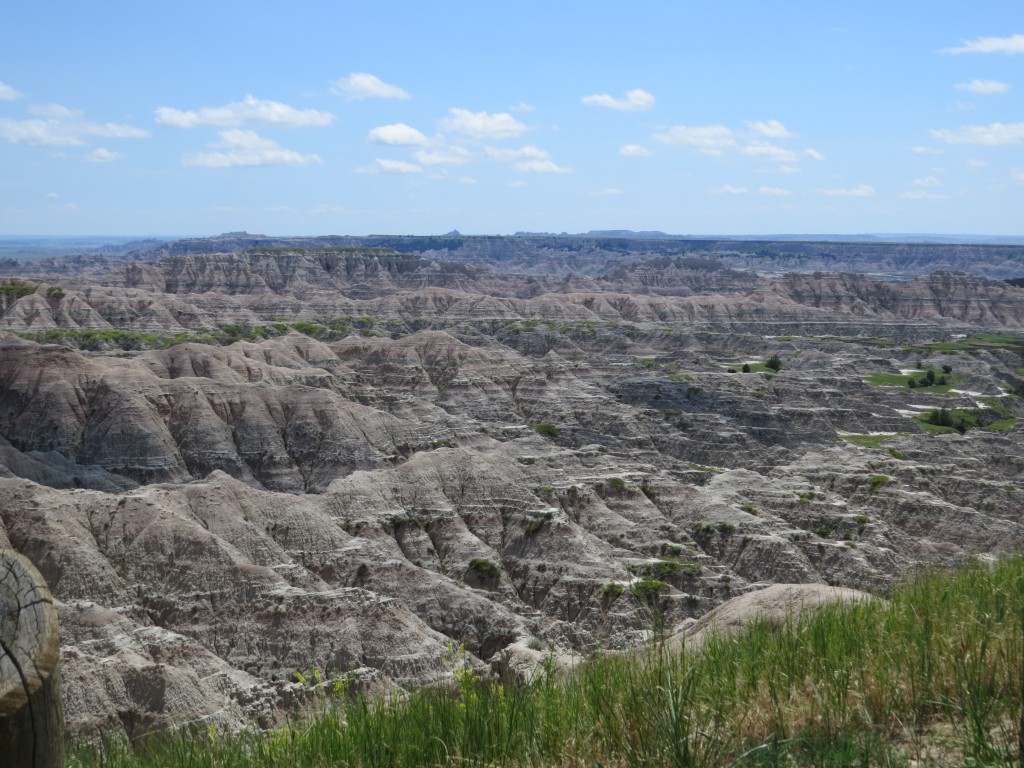 Finally. After an eight-year hiatus, the great American road-trip was reborn in our family. There’s something liberating about heading out on the open road putting hundreds of miles under our seats, crossing numerous state lines and seeing new sights. Our kids are to the age where they are now able to tolerate such intense travel and enjoy it too. This summer we were headed to the mountains of Colorado to visit my aunt and uncle in their beautiful mountain home.
Finally. After an eight-year hiatus, the great American road-trip was reborn in our family. There’s something liberating about heading out on the open road putting hundreds of miles under our seats, crossing numerous state lines and seeing new sights. Our kids are to the age where they are now able to tolerate such intense travel and enjoy it too. This summer we were headed to the mountains of Colorado to visit my aunt and uncle in their beautiful mountain home.
Though not the quickest route, we opted to head to Colorado via Rapid City so we could see Mt. Rushmore. It would be a first for Melissa and the kids, so it was a must-stop. The scenery and the birding was most unimpressive until we crossed the Missouri River at Chamberlain. But then, as soon as we made it to South Dakota’s better half, a western bird ambassador was there to welcome us. A gorgeous, no-doubt-about-it Swainson’s Hawk soared over the freeway while I was cruising along at 75 MPH. I involuntarily hollered, “Swainson’s Hawk!” Of course, soaring birds and speeding cars do not lend themselves to photo ops or good viewing. Evan panickingly asked, “Where?!” But it was too late and he didn’t see it. Then the porch-lip came out in the back seat, and I was reminded by my wife to not draw attention to wildlife sightings on the road because the kids inevitably miss them. We’ve been down this road before. Though I could now firmly claim this lifer, I tried to console Evan by assuring him that there would be more Swainson’s Hawks on this trip. Boy, was I right, but that’s for another post.
Though not part of the original travel plans, we opted last-minute to dip south of I-90 to drive through Badlands National Park. Growing up in Montana and then moving to Minnesota, I don’t know how many times I’ve traveled the I-90 stretch, but I have no memory of ever driving through the Badlands and seeing them up close. I only remember distant views from the interstate. I am so glad we decided to take this detour. The Badlands are truly impressive with their beauty and other-wordly look. And we were there on a beautiful day with cool temps.
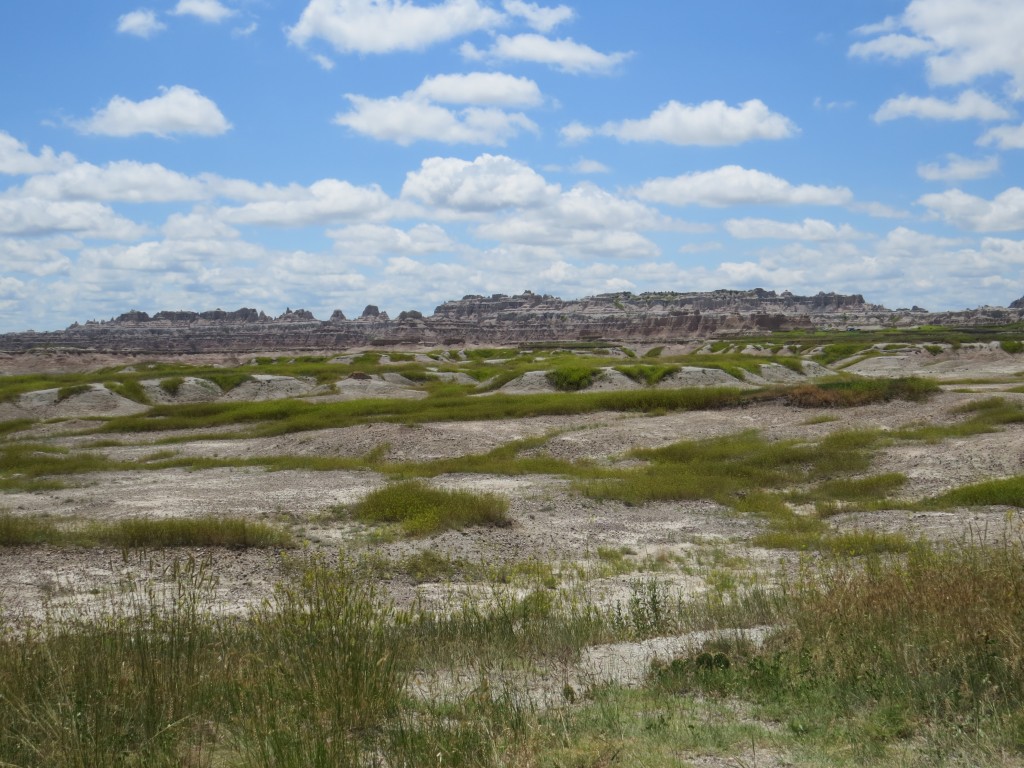
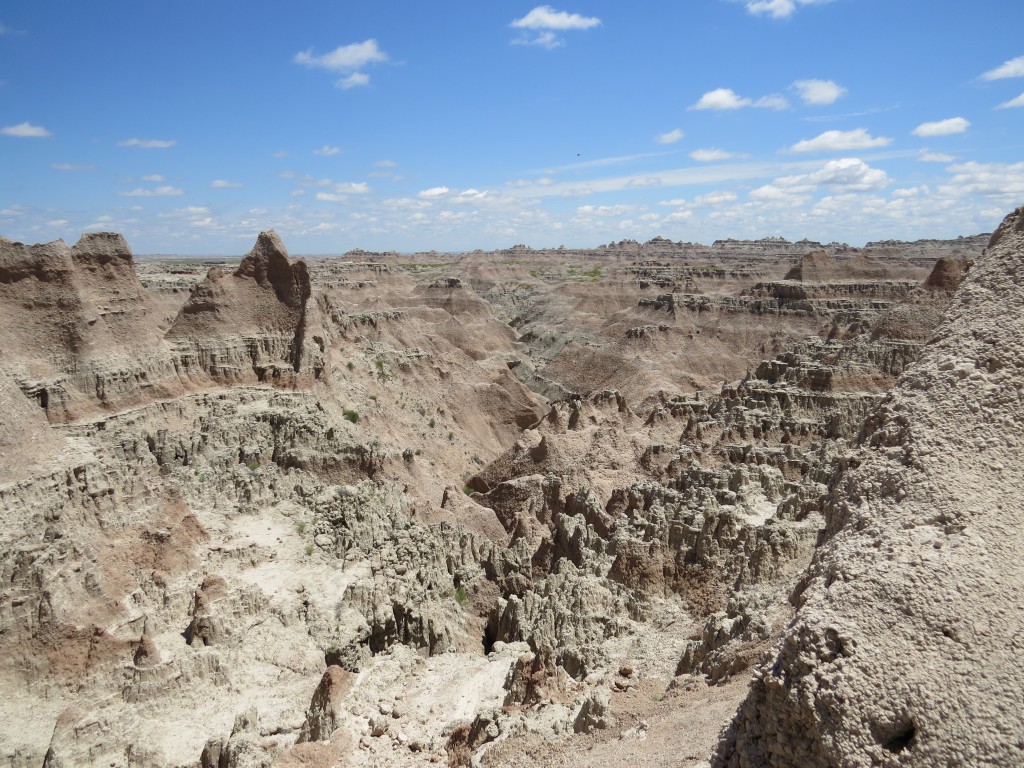 The expanse of the Badlands goes for miles, and I could have photographed them all day, but I was distracted by the birds. When we stopped at one of the first scenic overlooks I caught sight of a blue bird. It turned out to be our Mountain Bluebird lifer.
The expanse of the Badlands goes for miles, and I could have photographed them all day, but I was distracted by the birds. When we stopped at one of the first scenic overlooks I caught sight of a blue bird. It turned out to be our Mountain Bluebird lifer.
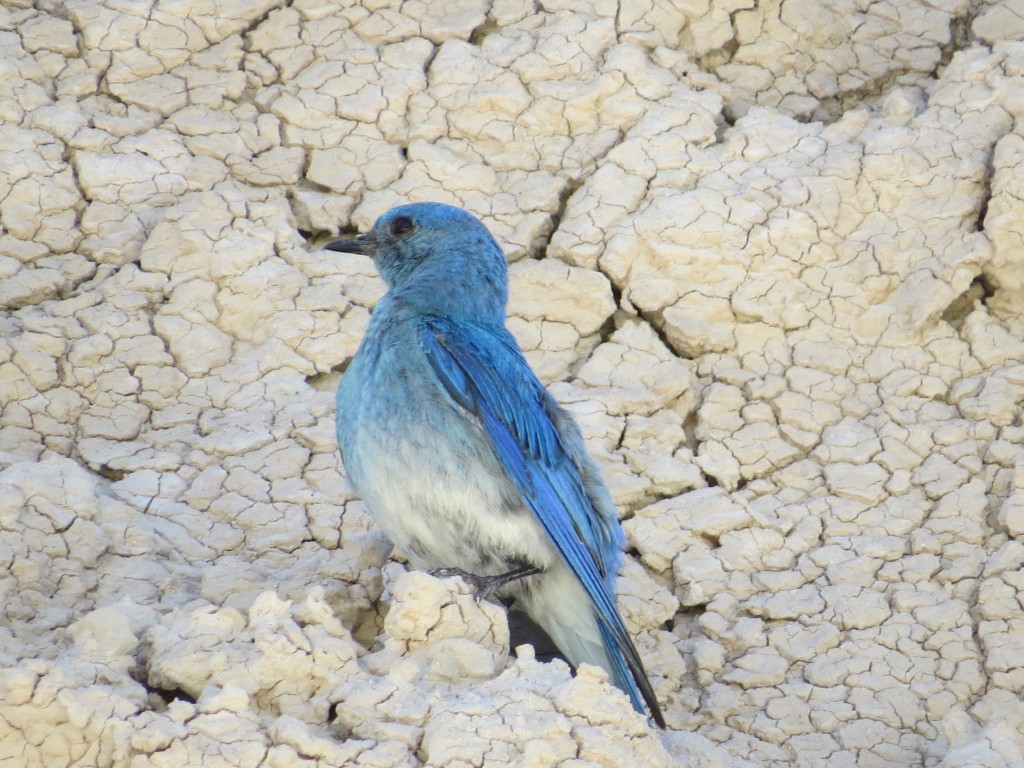
Mountain Bluebird
This was a hoped-for lifer and not one that I expected to get so soon in the trip. It turns out that there would be even more life birds at this little stop. Buzzing around the cliffs and rocky outcroppings were several Violet-green Swallows. My photo in the harsh afternoon sun doesn’t fairly show its namesake, but I can assure you that this is probably the finest-looking swallow there is.
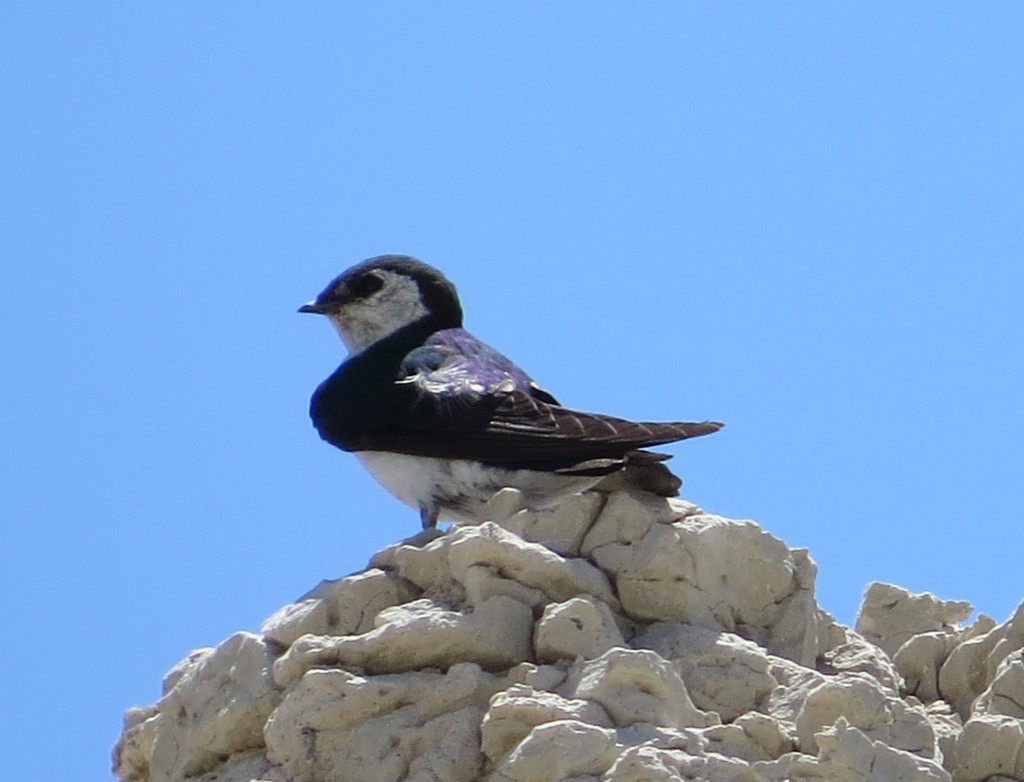
Violet-green Swallow
I expected this bird and was able to identify it easily because of my eBird scouting. That scouting also helped me identify another fast-flier, the White-throated Swift! Photographing swallows and swifts is a daunting task under normal conditions, even more so when you are trying to keep children frum plummeting to their deaths. Needless to say, I didn’t get any photos of the swifts.
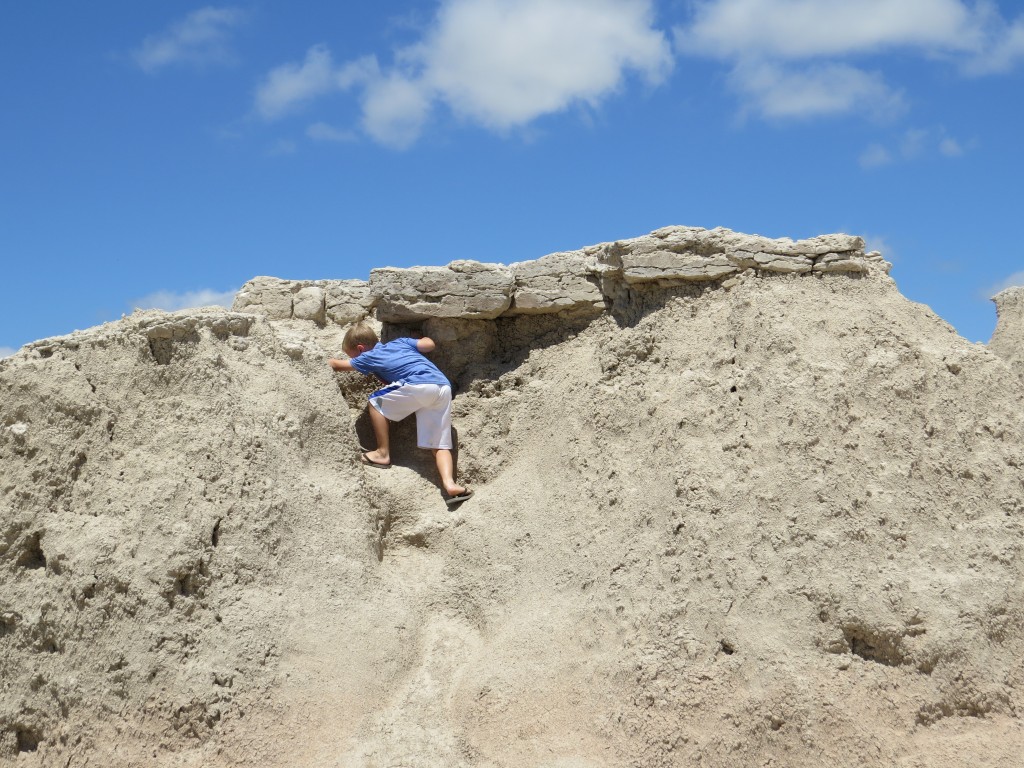 I could not believe how accessible death was at this place. Sure there are fun hills to climb like pictured above, but the other side is a doozy. This canyon was well over 100 feet down.
I could not believe how accessible death was at this place. Sure there are fun hills to climb like pictured above, but the other side is a doozy. This canyon was well over 100 feet down.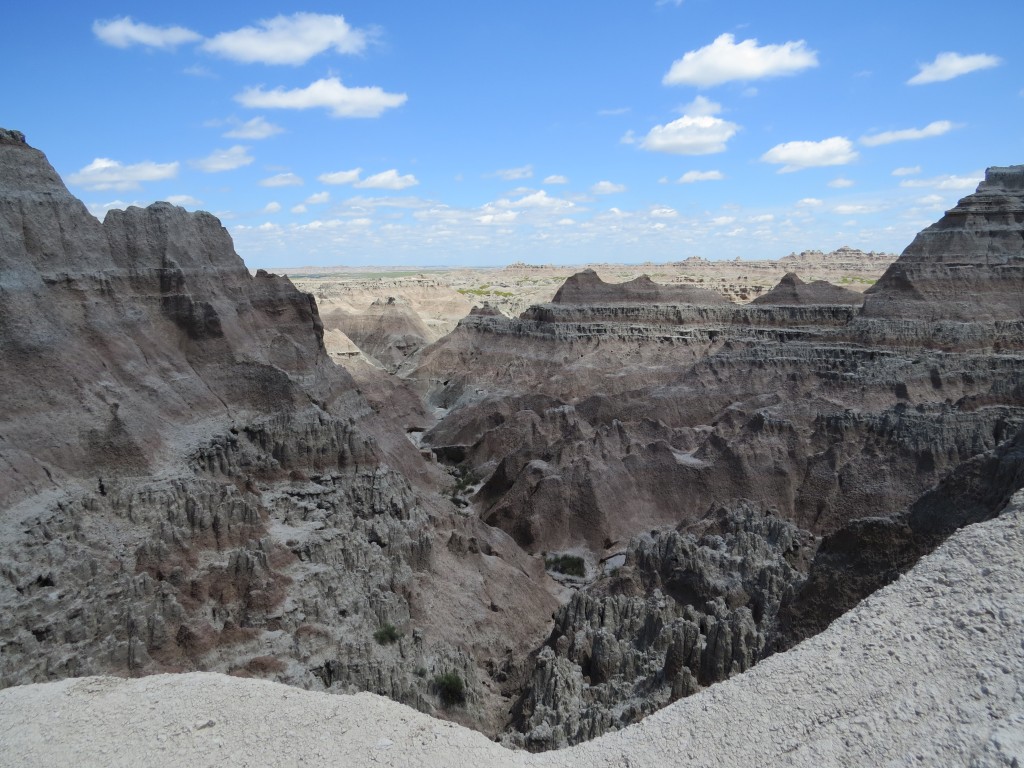 It was fun to look at the bottom of this barren piece of earth and see a family of Say’s Phoebes, another good western bird.
It was fun to look at the bottom of this barren piece of earth and see a family of Say’s Phoebes, another good western bird.
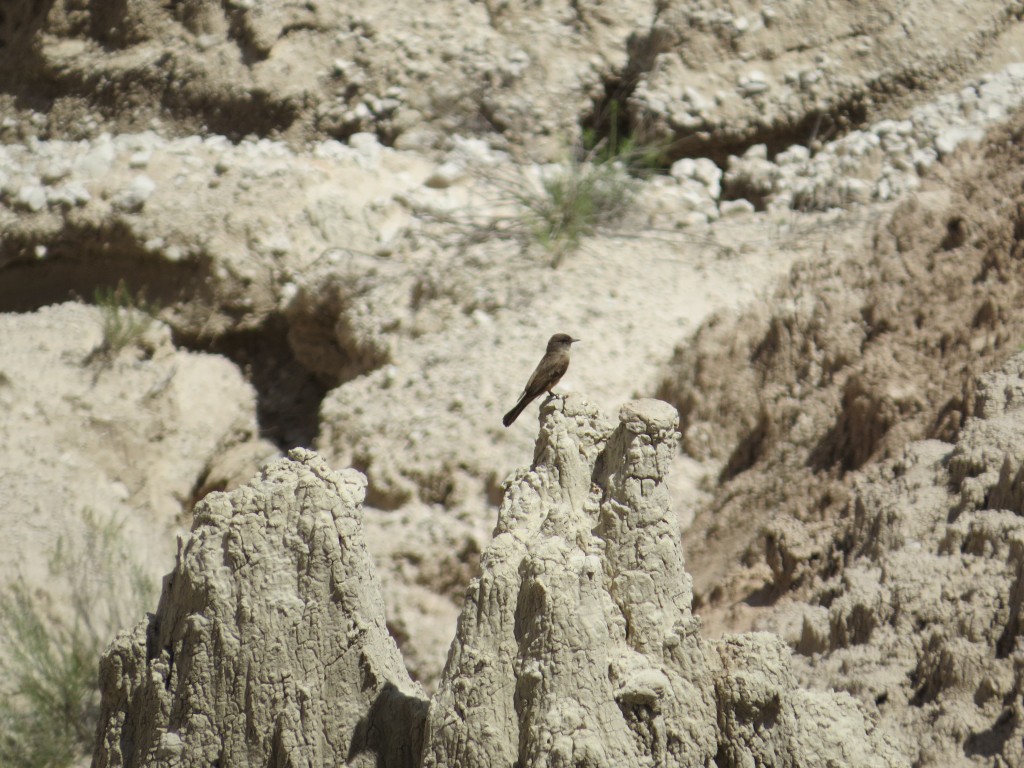 What a good little stop this was – three quick lifers and a fun place to stretch the legs after a long drive. But we had more Badlands to see and hopefully more birds too, so we continued on our drive through the park. We spied Western Kingbirds wherever there were trees on which they could perch. Such a fun bird.
What a good little stop this was – three quick lifers and a fun place to stretch the legs after a long drive. But we had more Badlands to see and hopefully more birds too, so we continued on our drive through the park. We spied Western Kingbirds wherever there were trees on which they could perch. Such a fun bird.
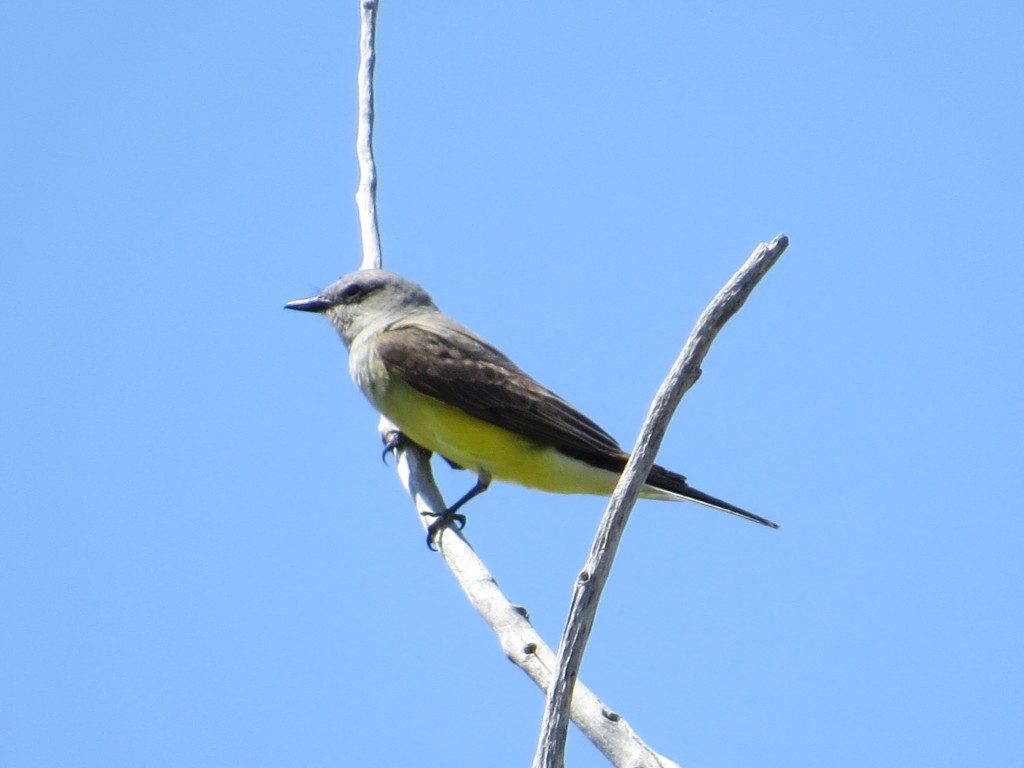
Western Kingbird
As we made our way out of the park on Sage Creek Road, I was watching the fences for more WEKIs as well as Lark Buntings. This potential lifer was reported as “ubiquitous” on this road in one eBird report. I was very hopeful. We did stop to be entertained by the myriad of Prairie Dogs as they popped up and disappeared like a real-life whack-a-mole game for as far as the eye could see. The whole family enjoyed the antics of these cute, pudgy rodents.
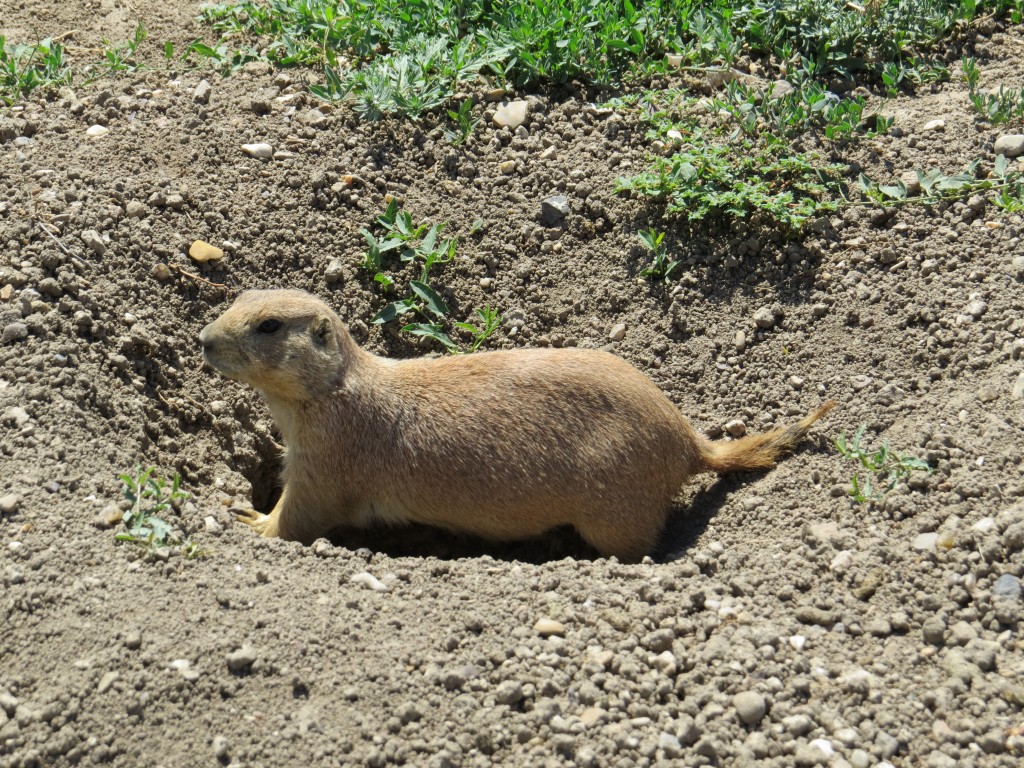
Prairie Dog
But doggone it, I completely forgot to check out the Prairie Dog Town for Burrowing Owls. I had seen reports of them being with the Prairie Dogs. One of those dogs poking its head up could just as easily been one of the Burrowers. We’ve seen them before in Arizona, but one should never pass up an opportunity to look for a Burrowing Owl.
We continued our drive, and I was getting frustrated that we were not seeing the “ubiquitous” Lark Buntings. Finally as we pulled out of the park, Evan pointed to a group of birds on the fence and asked what they were. Mixed in with dozens of Mourning Doves were two Lark Buntings! But they were a long way off and not letting themselves be photographed well.
It didn’t matter because as we kept driving on Sage Creek Road on the outside of the park, the Lark Buntings truly were ubiquitous. I guess I should have read that report a little more carefully. In case you are a birder and are looking for the Lark Bunting, the birds were on the wires on the north-south stretch.
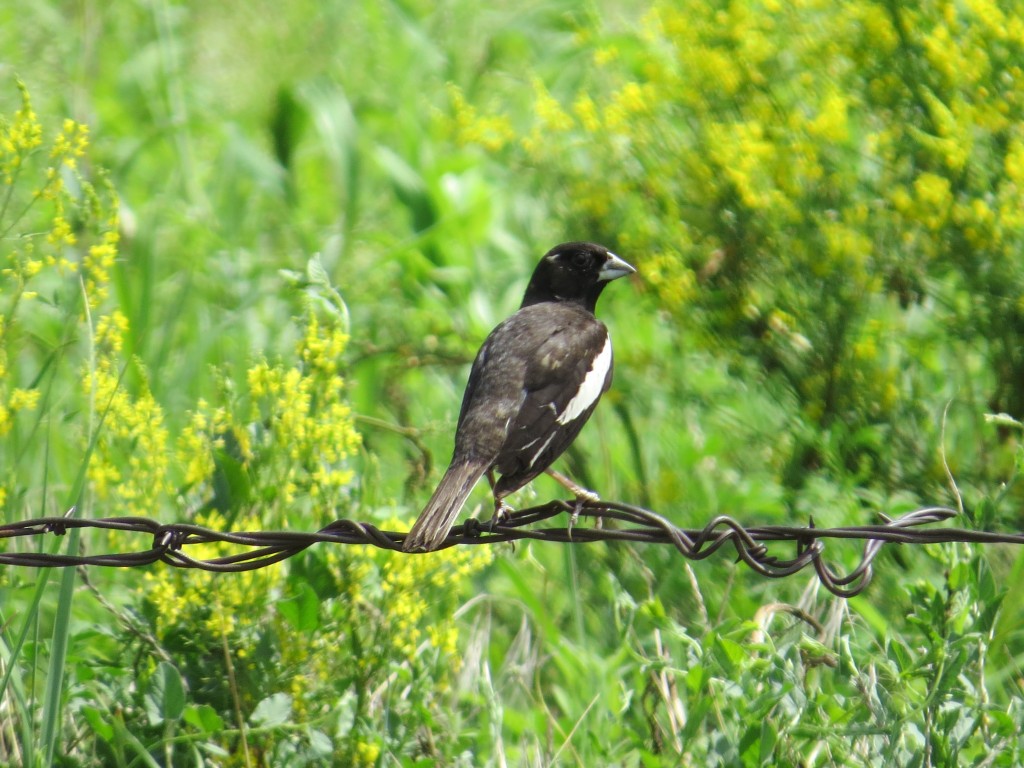
Lark Bunting
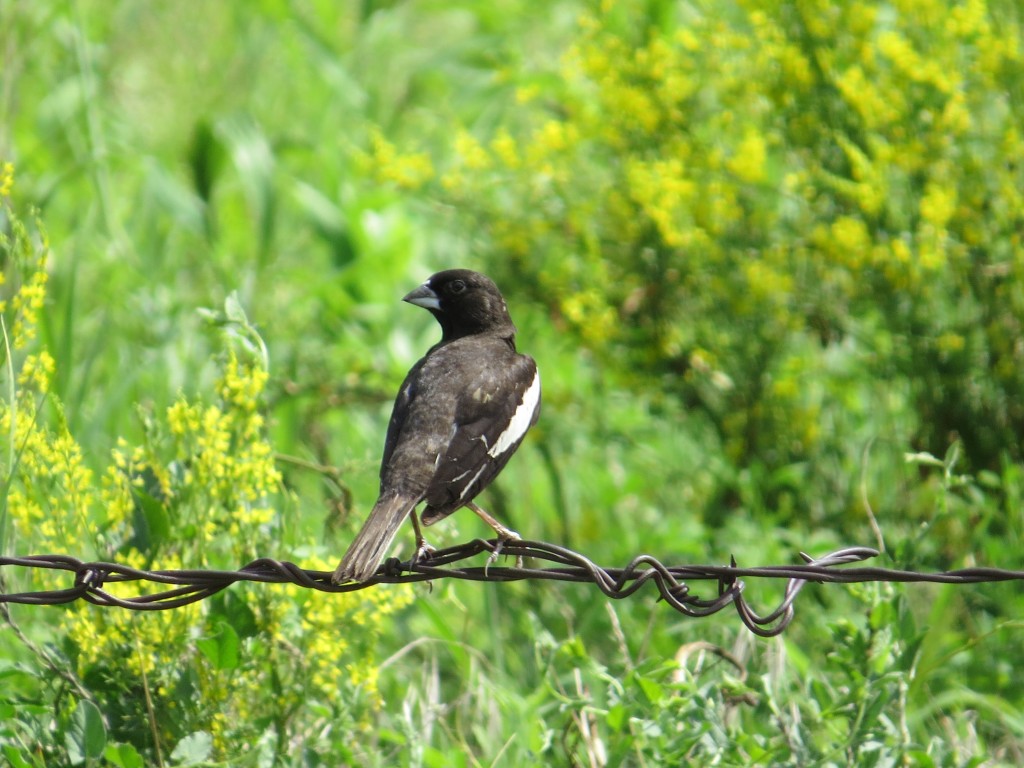
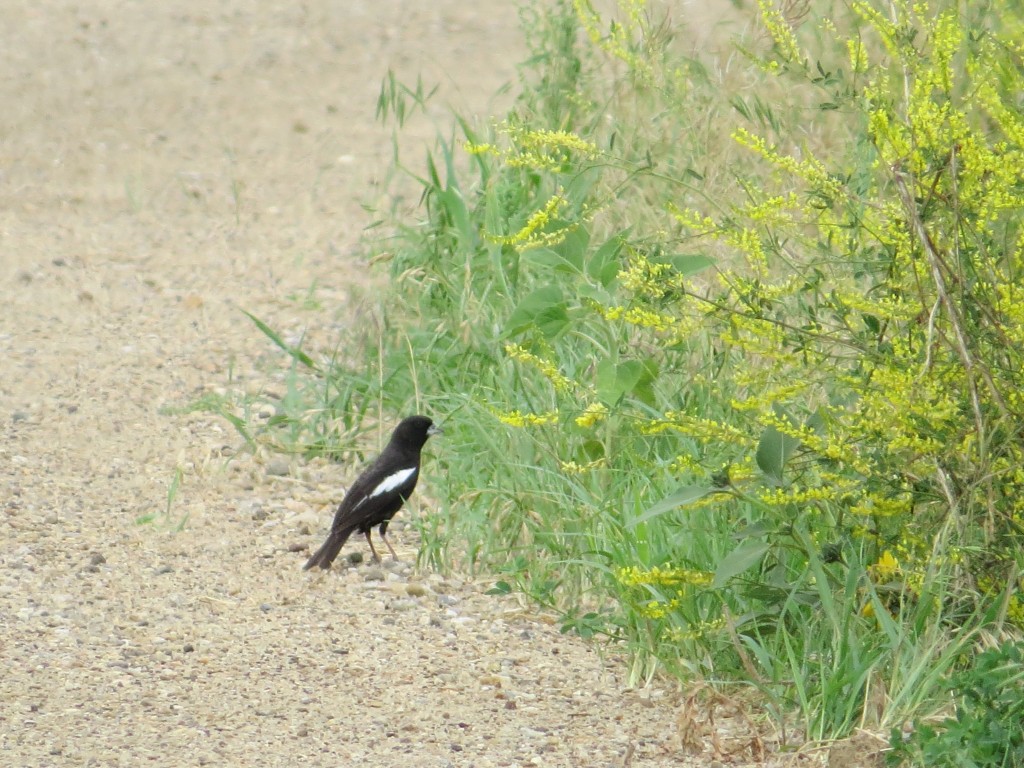 After securing a tidy haul of life birds and enjoying the scenery, it was time to make our way to the Black Hills of South Dakota to meet up with the presidents at Keystone. The most notable bird seen along the way was a Red-headed Woodpecker – always a treat to find.
After securing a tidy haul of life birds and enjoying the scenery, it was time to make our way to the Black Hills of South Dakota to meet up with the presidents at Keystone. The most notable bird seen along the way was a Red-headed Woodpecker – always a treat to find.
The stop to see Mt. Rushmore was brief. It was basically a tick on the bucket list for many in our party and nothing more. To us it just did not compare to the natural beauty of the area and its wildlife.

Great Faces
With their pine covered mini-mountains, the Black Hills are absolutely gorgeous. Our destination for the night was Hot Springs, a great small-town without the tourist trappings of Keystone. But on the way to Hot Springs we passed through Wind Caves National Park. Nothing new in terms of birds, but this guy right by the road was startling, a little scary, and very cool!
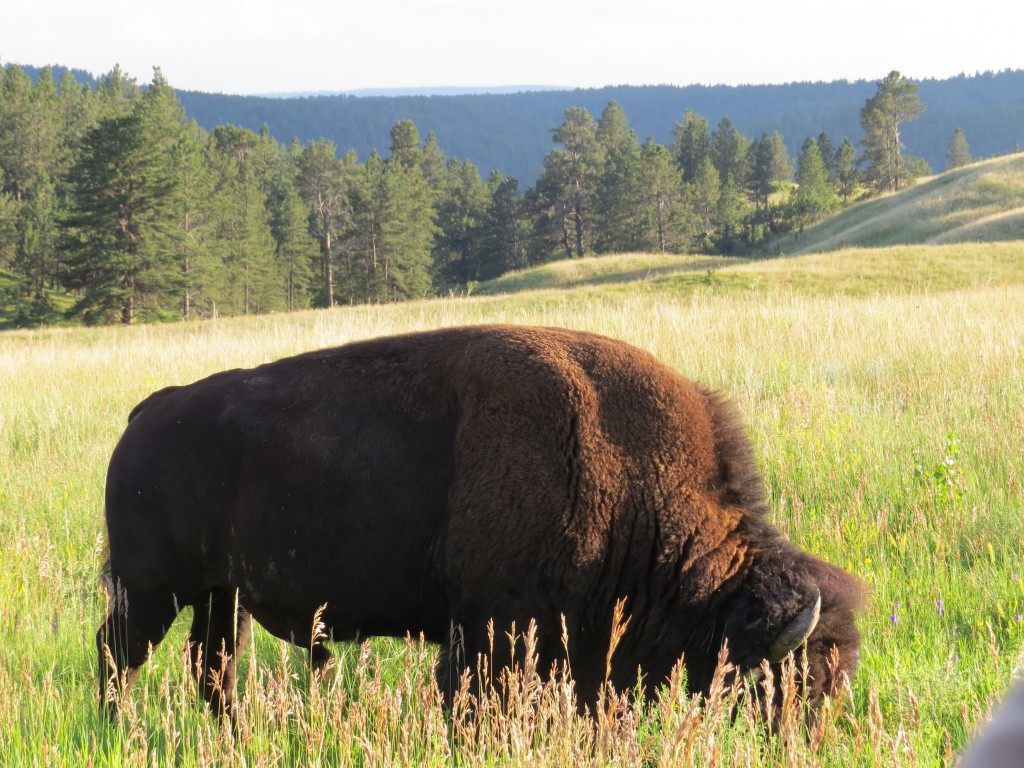
We eventually made it to Hot Springs where we settled in for the night. But being in new lands with new birds does not lend itself to getting rest. I was up and at ’em at first light to check out a local city park, Lower Chautauqua Park, located near a water park called – get this – Evans Plunge. I was going to this park because it was very near our hotel and there had been eBird reports of Black-headed Grosbeaks among other notable western birds.
The first bird I heard and saw was the Spotted Towhee. It was quite a thrill to catch up with this old friend after finding my lifer as a Kandiyohi County first official record back home in April. In the early morning light I was only able to moderately improve my photograph of this species.
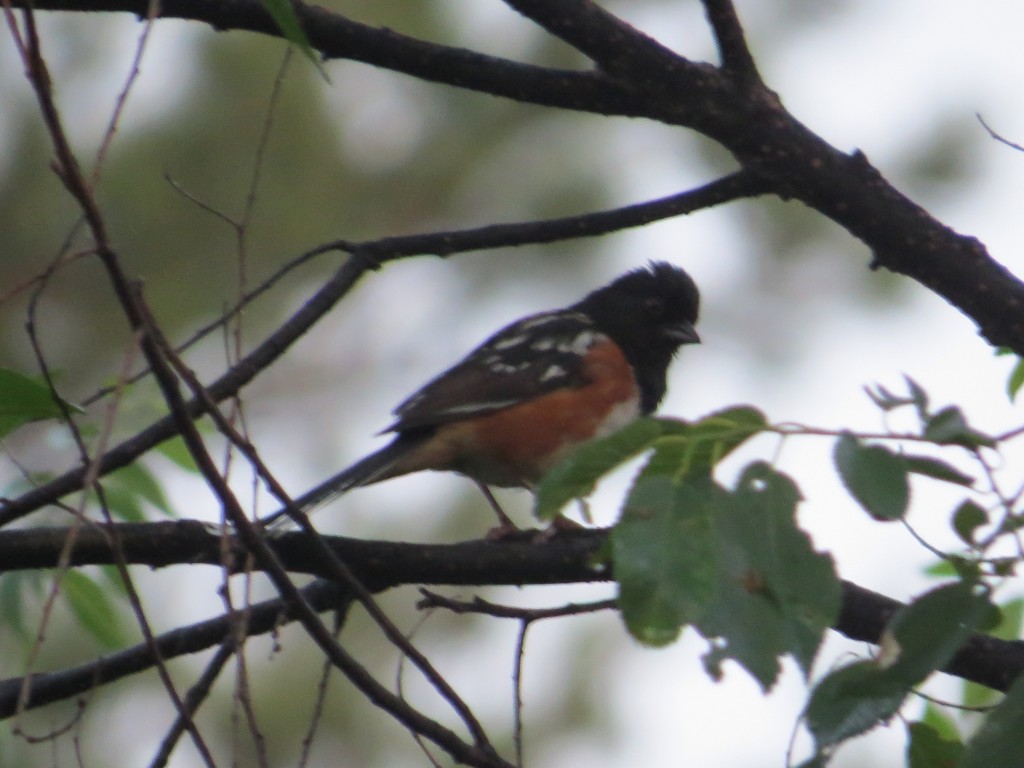
Spotted Towhee
Eventually I had the good fortune of bumping into the reported Black-headed Grosbeaks. Despite my best efforts of following them through the trees, I only managed to get one decent photo. Regardless, I was pretty excited to get this lifer. It was such a cool-looking bird. I don’t think I’ve met a grosbeak I didn’t like.
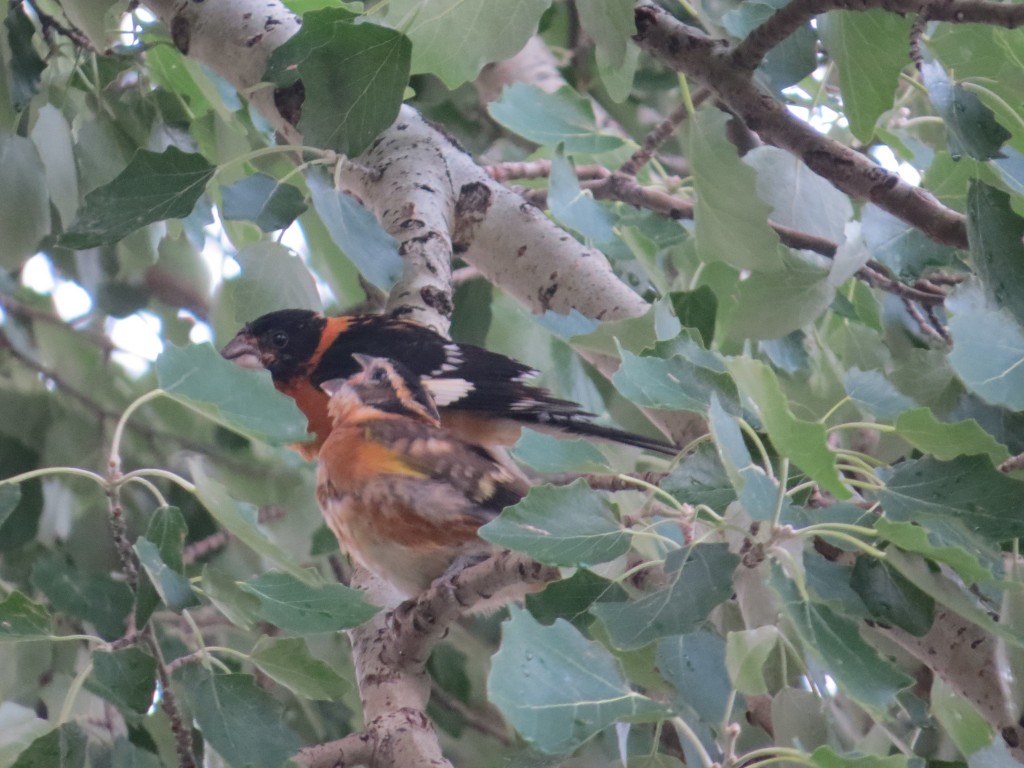
Black-headed Grosbeaks
I wish I could have hung out longer to get more photos of these birds in better light, but I had to head back to the hotel so we could get ready to venture through Wyoming on our way to Colorado. South Dakota was good to us with several lifers and spectacular beauty, but it was time to get to Colorado to see what avian treasures awaited us.
Boosting the Life Lists – A Colorado Send-off
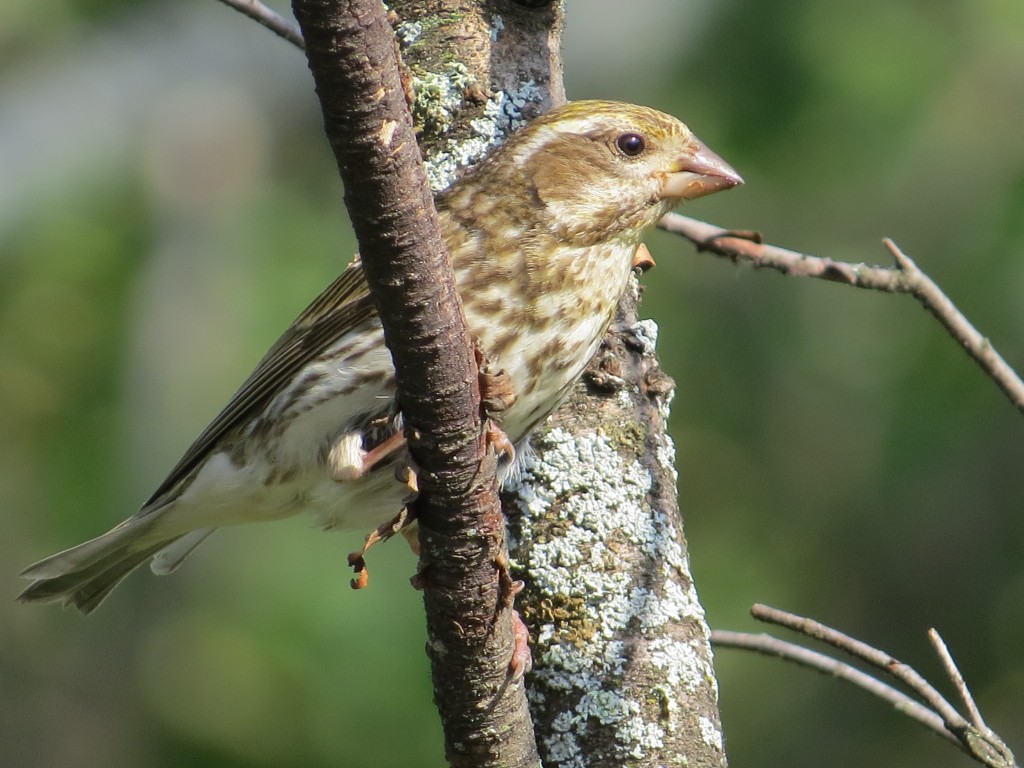
Purple Finch – female
As you read this, we are currently on the road – again. This time, though, we are headed to the great state of Colorado. Our route will take us through Badlands and Black Hills of South Dakota. Birding is not the focus of this vacation as we are going to visit relatives and show the kids the likes of Mt. Rushmore and the Rocky Mountains. But one does not step foot in new biomes without pulling out something special birdwise. You can bet we’ll have a few souvenir sightings to show you and tell you about. Our life lists will surely expand. Speaking of life lists, I’ve been hard at work renovating our life list pages on this website. I finally got around to adding the Arizona birds, and I’ve added dozens of new photos – replacing old ones or adding them where they didn’t exist. It’s a constant work in progress that I’ve been quietly tinkering with the past few weeks. My taste for which single photo to display for each species has become more refined (picky). Not even Mrs. Purple Finch here made the cut. So come back to the blog to see what we dug up in Colorado and check out the lists as they will surely expand and change.
Long-eared Owl
Serendipity in the Swamp
Alright, dear readers, as promised in the post before the Brainerd trip, I have a story to tell. And it’s a good one. I really should have learned by now to expect the unexpected. But I haven’t, and that’s why this hobby can be so exciting and why this story is so good. I had one of those unexpexted moments in the swamp back home. Sadly, though, I did not get my guest photos to enhance the story. Nevertheless a good story is a good story and needs to be told. But because we live in an increasingly visual society (i.e. fast food menu boards), I have included some gratuitous bird photos from the archives.
The story starts when I got up at an unwholesome early time bound and determined to brave the mosquito thicket to try to see a Winter Wren at my parents’ place. As I walked to the location, getting soaked from the dew-laden, tall grass, I was struck by the absence of the Winter Wren’s song. It was strange since I had heard it the past couple days. Since I wasn’t hearing it, I scrapped my plans to go bushwhacking. But I was awake and in the land of birds, so I had to do something.
I settled on driving the roads in the area to look and listen for birds. The audio birding was fun as I heard another Black-billed Cuckoo, Sedge Wren, and a collection of warblers. I even got to see a Red Fox soaked from dew of the morning, standing on the road for a momentary reprieve from the wetness.
I didn’t quite know what to do with myself – it’s frustrating to be up for some birding but have no focus, no plan of attack. I finally decided I would drive the swamp road. Maybe I’d get lucky and catch a Spruce Grouse on the road gathering grit for his crop. After all, I saw one in that spot about a decade ago.
The road through the swamp is part of the route between my parents’ house and Melissa’s parents’ house. Both sets of parents actually live on the same road about 10 miles apart. No, Melissa and I did not grow up this close to each other, but my parents moved to this area when they retired. Though the parents live on the same road, you cannot get from one place to the other without taking some other roads. Let me explain and use your mind’s eye to picture this. From Melissa’s parents’ you head east for a mile, north for two miles, east again for five miles, back south for two miles, and then east again for a mile. It’s like you are driving the outline of a short top hat. Though they live on the same road, the reason for this large hat-like bump of a detour is that there is a huge spruce bog separating our families where both house-building and road-building would be nearly impossible.
This five-mile stretch runs through part of the bog with tall Black Spruce trees lining the road creating a corridor through the swamp. The bog used to depress me. You look in the understory and just see utter darkness with occasional patches of light as the dense spruce boughs block the sun. The “ground” is spongy as a bog actually floats on water. Mosquitoes reign supreme. It is no place that a sane person would ever want to traverse. Our family has bombed through the swamp road hundreds of times, often racing to get from one holiday meal to the next without properly digesting the first. I don’t think I had ever taken the gravel road at a speed of less than 50 MPH. Still, I often thought that it looked a lot like the Sax-Zim Bog and that maybe there could be a Great Gray Owl or something else that’s cool. But I thought, ‘Nah, there couldn’t be anything like that this close to home,’ and just continued to drive warp speed.
Anyhow, I was trolling this five-mile stretch with the windows down trying to make sense of all the local variations of warbler songs when I noticed a vehicle a couple miles ahead of me that was stopped. It’s very strange to meet other cars here, let alone at 6:00 in the morning. It couldn’t have been a hunter this time of year, and it seemed too early in the day for a forester to be out cruising timber. Strange. I kept rolling along at 5 MPH listening to the sounds of the swamp but was distracted by this vehicle that wasn’t budging, only occasionally flickering his brake lights to indicate short bursts of movement. What in the world was going on? Finally I caught up with the now parked truck, and I as I passed it I saw it was Minnesota DNR truck and its driver was standing by the tailgate wearing a mosquito net-hat and binoculars. With no coffee in my system, it took a little bit for my brain to process the image. I got about a hundred yards past the guy when it hit me – a state employee wearing binoculars?! You don’t need binoculars to look at trees or plants or really anything without feathers. Holy smokes, I must talk to this guy.
So I whipped around and pulled up to the man. And I saw his two-foot camera with a camouflage lens. Whoa, this is getting better! I asked if he’d seen anything good. Then he dropped a bomb. “Yeah, I just had a Great Gray Owl about a hundred yards back.” WOW! A lot of emotions were going through me. First was a great anxiety to hurry up and see this owl and second was that my hunch of this bog being an owl abode was right! I desperately wanted to part company right away after he told me what was quite literally a stone’s throw away, but he just kept lobbing bombs – a Black-backed Woodpecker about a mile down the road, a Black-throated Blue Warbler near Orr, a Northern Hawk Owl a few miles away, and another Great Gray Owl the day before on – get this – another section of the route we travel back and forth between our parents’ houses. Oh, this was good information but that owl…
Then the dude asked who I was. He said recognized my name from the listserv, so I got up the gumption to ask him his name. Sparky Stensaas was the reply. Unbelievable. That may mean nothing to you, but Sparky’s in the big leagues when it comes to birding. He’s a bird guide, a photographer, and the executive director of the Friends of Sax-Zim Bog. It was fascinating to meet him on my turf far north of his normal range of the Sax-Zim Bog and the Duluth area doing official work. We traded numbers to share any more sightings in the area, and then we split up. Sparky was heading deep into the dark bog on foot, and I was staying on the road and going back to find that GGOW.
I never did see the owl. Perhaps all our conversation scared it away. How I would have loved to see this bird at “home” and in the summer no less. We do have some resident Great Grays, but they are harder to find in the summer months. So I don’t have a fresh picture for you and will instead have to appease you with my best non-winter looking GGOW pic.
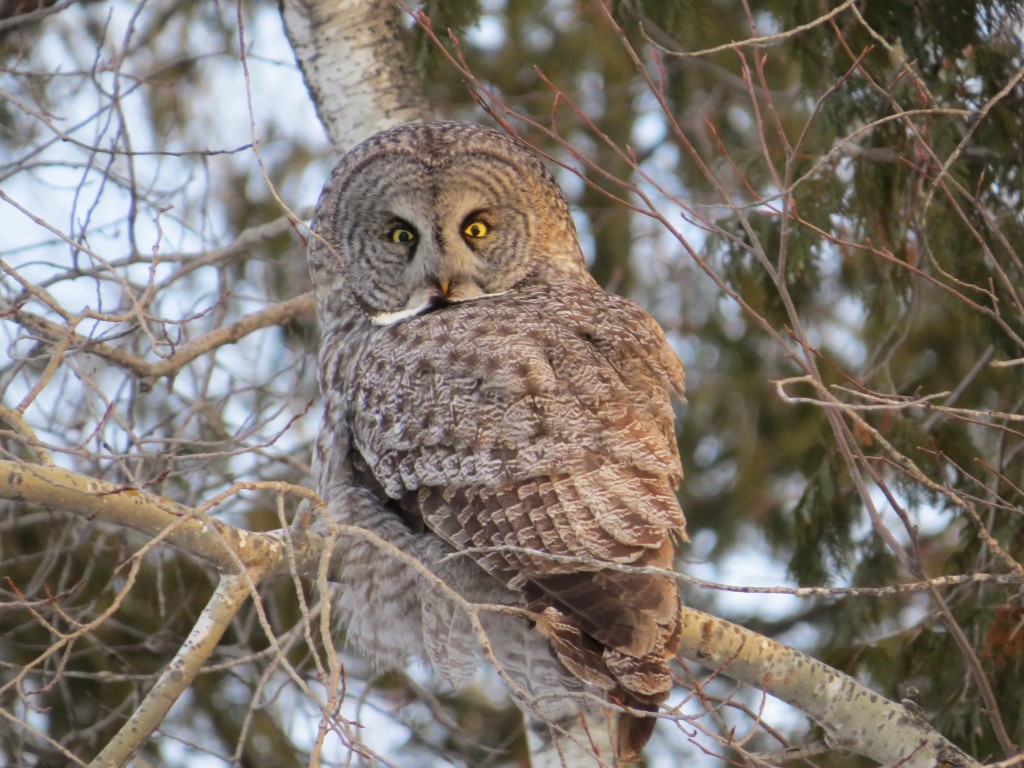
Great Gray Owl – archive photo of life bird – March 2013 – Tower, MN
I got a text later that morning from Sparky that the Black-backed Woodpecker had come out to the road! He told me what telephone pole to stand near and listen. This is a tough woodpecker to find. It’s the kind that Iowa birders travel to Sax-Zim to see and strap on snowshoes to follow a guide great distances into the bog on a 20-below day. I’m not making that up. I have never seen one. How cool would it be to get this lifer at home instead of Sax-Zim? I went there about an hour later but had no luck.
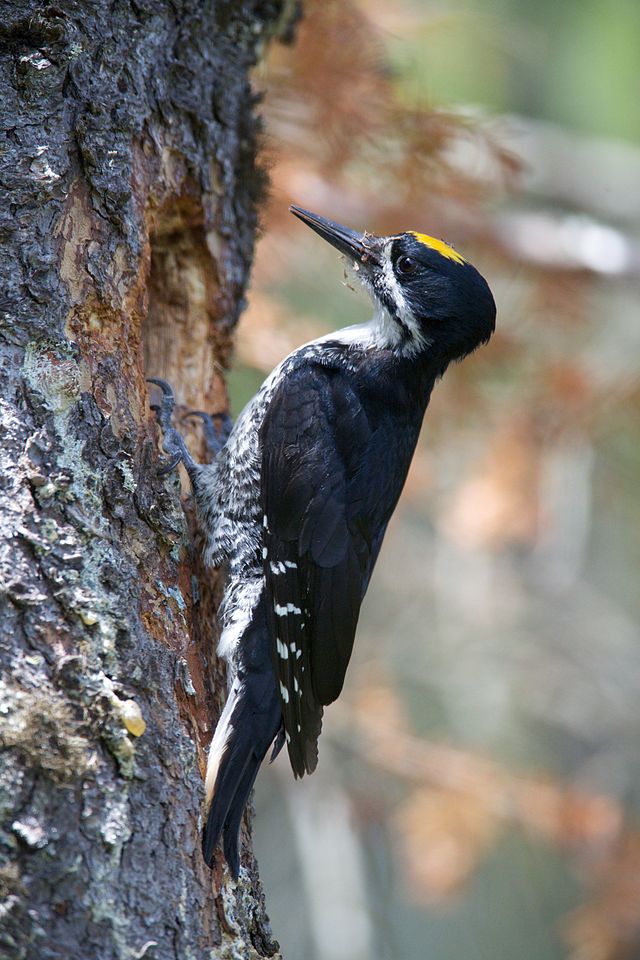
Black-backed Woodpecker – Image courtesy of Wikipedia
I’ve been back to this stretch of road several times right at daybreak and have been unsuccessful in my attempts to find either bird. But I have something just about as good – hope. Each time I go home now I have a mission to find these guys. Dad always said the Sax-Zim Bog is like a good fishing hole. Boats attract more boats and more boats until that’s the only place people fish. Same is true with birding the Sax-Zim Bog. As my dad said, those good birds can be anywhere in northern Minnesota. Very true. It only took a Sax-Zim guy to prove it.
